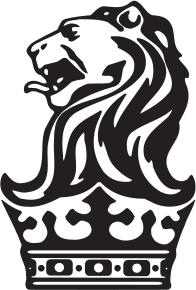Read Guest Body Language for Better Customer Service
Career Advice / February 2, 2022In customer service professions, we often rely on the guest to tell us what they want or need. But guests—just like anyone else—will rarely tell you everything that’s on their minds. They could be afraid of making a fuss or be concerned about hurting your feelings. Or they may be amenable to hearing about some add-ons, but not know what to ask about.
When you read the non-verbal cues of your customers, you can get to the bottom of what they’re thinking—not just what they’re saying. Here are six types of body language, and what they mean.
Pursed Lips: They May Be Holding Something Back
Pursed lips often indicate tension. This anger signal could mean that the customer is unhappy but doesn’t want to say anything. Some people find it difficult to advocate for themselves, so they get frustrated instead of requesting a solution to their problem. In this situation, their words may say that everything is fine, but their face may indicate the opposite.
You may want to ask one or two follow-up questions to try to draw the guest into expressing the problem so you can fix it. Or, you can toss an extra or upgrade their way to turn those pursed lips into a smile.
Chin Jutting Out with Hands On Hips: Could Mean Anger and Dominance
This slightly aggressive stance, when aimed at you or another employee, can show that the person is upset and trying to dominate the interaction. They may not see the person they’re communicating with as an equal. In this situation, it’s usually best to get a manager involved. When the guest feels like their concerns are being taken seriously through escalation to a supervisor, they may abandon their defensive stance and be more likely to work toward a solution.
Eye Contact: Shows That the Customer is Engaged
When a guest isn’t looking at you, they’re probably not very engaged in the transaction. They may be impatient, or just uninterested, depending on the context. But if they’re making eye contact in a customer service setting, you have their full attention. In this situation, you have a great opportunity to go for an upsell. Or simply engage in some friendly banter to make them feel welcome.
Of course, the eye contact rule doesn’t necessarily apply in situations where the customer is looking at something specific, like double-checking a restaurant menu while placing an order or looking up a hotel reservation on their phone during check-in.
Drumming the Fingers: May Mean The Guest is Impatient
Drumming the fingers is a classic sign of impatience and boredom. When the guest is drumming, they probably don’t want any chitchat. They want to wrap up their transaction and get on their way.
If you see a guest drumming at a counter or at their table before being served, it’s a great idea to pre-empt the issue with an apology for the wait as soon as you greet them. This acknowledgment usually takes the sting out of slow service and can turn their mood around.
An Open Stance: Can Express Interest
An open stance—feet and shoulders facing you with arms uncrossed—often means that a person in interested in what you’re saying. Similar to eye contact, this posture could show that the guest is open to a sales proposition or simply willing to chat.
On the other hand, feet and shoulders turned away and arms crossed shows that they’re closed off. Don’t try to force the conversation, or you may cause a problem where there wasn’t one before.
Matching and Mirroring: Shows Trust and Goodwill
Body language is often a two-way street. A guest may observe your body language, and respond with similar movements or gestures in kind. This can show trust and goodwill between you and the guest, which is a wonderful thing! Clearly, they’ve warmed up to you. Keep doing what you’ve been doing, and they’re likely to leave the interaction very happy.











